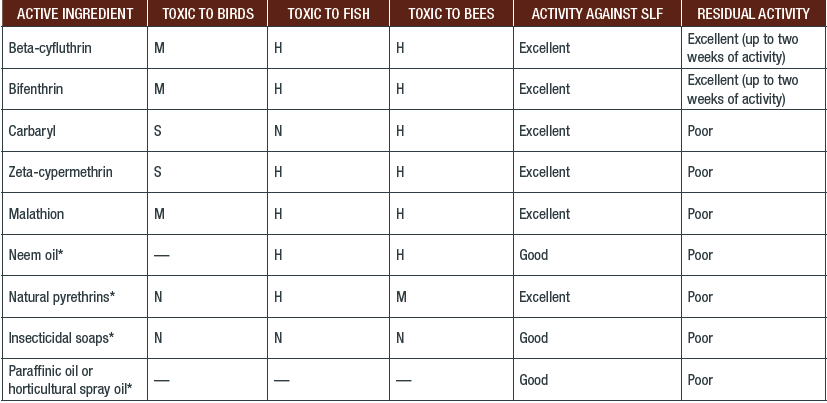I'm not going to go find the ag dept bulletin again, but it's one evolving strategy to control them.
Another effective one they are trying in PA is B.bassiana and PFR-97, which look promising as biological controls.
The idea to leave bait trees or plants is fairly common, they feed and lay eggs on their favorite food, concentrates them, rather than having to spray the entire neighborhood.
Usually, they spray the bait tree bark with a paste pesticide. It makes finding the egg masses easier for fall spraying also.
Permethrin based sprays are effective, very high mortality on the instar phase.
Spinosad, not so much, 55% mortality.
Abstract. Spotted lanternfly, Lycorma delicatula (White), is an invasive Asian insect that was initially found in Berks County, Pennsylvania, in 2014. As o

academic.oup.com
Publication providing comprehensive details on the spotted lanternfly, including identification and life cycle; quarantine and distribution; host range, phenology, and damage; and management.

extension.psu.edu











![IMG_1194[1].JPG IMG_1194[1].JPG](https://www.rollitup.org/data/attachments/4276/4276935-41424466f273baaba05cb306485e4ebf.jpg?hash=QUJEZvJzuq)
